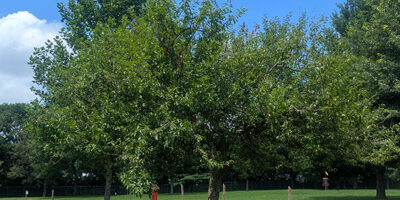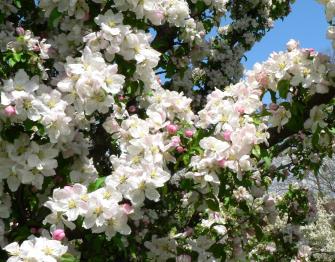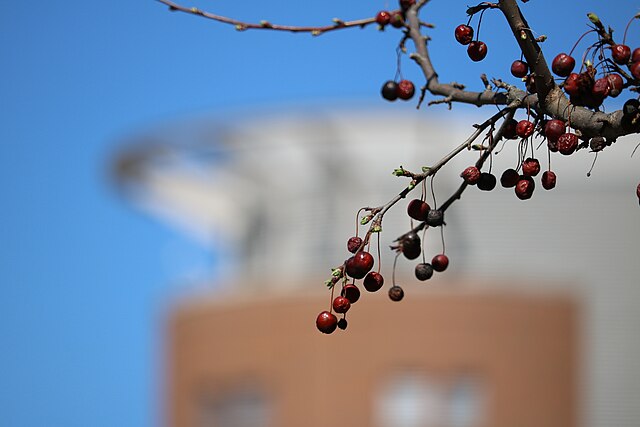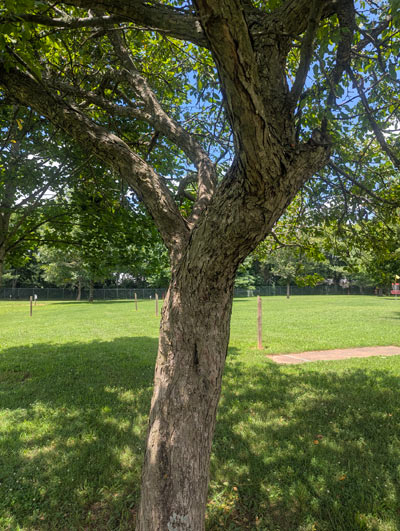
Flowering Crabapple - Malus Floribunda Rose Family (Rosaceae)
Most crabapples are considered four-season trees.2
- Crabapples are best suited to zones 4-8. They enjoy 6 hours of sun a day to look their best,
- Flowering crabapples are available in pink, white or magenta blooms, and all fruiting trees will have tiny fruits that look like berries but can be up to 2 inches wide. That’s the crabapple itself!
- Malus varieties can come with green, bronze, or purple foliage, depending on cultivar.
- You wouldn’t enjoy eating the crab apples straight from the tree as they are very tart; crabapples do make excellent jams or jellies.
- This tree is an excellent choice for along sidewalks size wise; sadly, the fruits can stain walkways or patios.
- The dark green leaves are alternate, simple, elliptical, 2-4″ long with serrated margins
PRO TIP: Botanically there is NO difference in a crabapple tree and a normal apple tree. Horticulturists note that any fruit smaller than 2 inches is a crabapple; every fruit larger is a species of apple.
References:
- Malus floribunda. Missouri Botanical Garden. https://www.missouribotanicalgarden.org/PlantFinder/PlantFinderDetails.aspx?taxonid=286525. No Publication Date. Accessed January 24, 2024.
- The Flowering Crabapple. Cooperative Extension Service. https://www2.ca.uky.edu/agcomm/pubs/id/id68/id68.pdf. No Publication Date. Accessed January 24, 2024.
- https://virtualvisitmygarden.blogspot.com/2012/02/flowering-crabapples-at-arboretum.html
- Flowering Crabapple (40557627803).jpg (2024, July 14). Wikimedia Commons. Retrieved July 17, 2025




